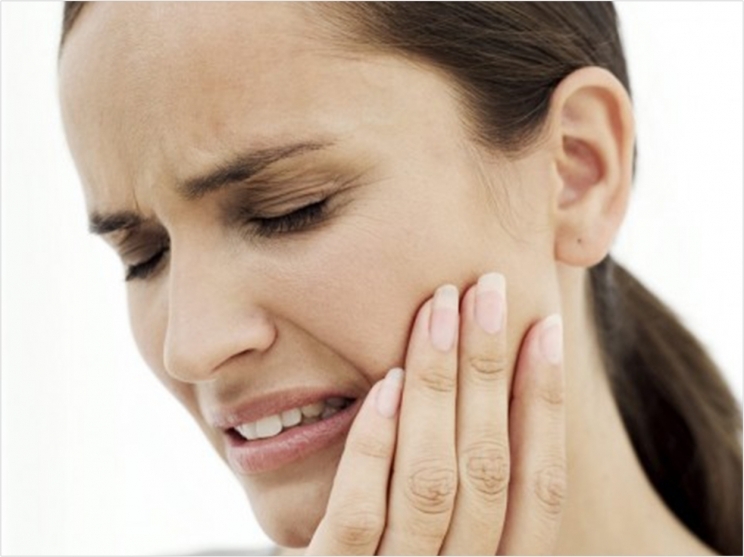
Less invasive and more evidence-based approaches are available for temporomandibular disorders (TMDs), yet some dentists continue to rely on aggressive or costly procedures as a first-line treatment, according to a report from the National Academies of Sciences, Engineering, and Medicine.
To avoid harmful and unnecessary treatments and improve patient care, the report says that professional societies including the ADA should develop TMD clinical practice guidelines to inform diagnosis, treatment, and referral strategies for patients.
Everyday activities such as talking, smiling, and eating often are difficult and painful for those with TMDs. By some estimates, the Academies say, 11.2 million to 12.4 million adults in the United States, or nearly 5% of the population, have pain that could be related to TMDs. Also, TMDs are particularly common among women ages 35 to 44.
An individual may have more than one TMD and may also have overlapping conditions such as migraines, fibromyalgia, and other forms of widespread pain. Causes include injury, genetics, and environmental factors. TMDs also affect different body systems and pose different health and quality of life issues.
As a result, the report says, TMD care can involve multiple disciplines including primary care, dentistry, physical therapy, chiropractic care, behavioral health, and clinical psychology.
In addition to the development of clinical practice guidelines, the report recommends:
- Creating an ADA-recognized dental specialty in TMDs and orofacial pain
- Improving reimbursement for TMD care
- Establishing a TMD patient registry
- Coordinating TMD research efforts through a new National Collaborative Research Consortium for TMDs led by the National Institutes of Health (NIH)
Further, the report offers strategies to overcome the lack of coordination between dentistry and medicine in TMD care, noting that every year, 108 million Americans visit a physician but not a dentist, representing an opportunity to ask patients about oral health concerns.
“TMDs are highly prevalent, and not all TMDs are the same. New pathways are needed to bridge medicine and dentistry and provide patient-focused care,” said Enriqueta Bond, president emeritus of the Burroughs Wellcome Fund and chair of the committee that wrote the report.
“TMDs have been compartmentalized as a dental issue for too long. There is a significant opportunity to drive increased funding to research and care for TMDs and to ensure TMD research is incorporated into NIH-wide initiatives and beyond,” said Bond.
Recognizing TMDs and orofacial pain as a dental specialty, the report says, would help increase access to qualified professionals and ensure patients receive the most appropriate care rather than resorting to what is most readily available or easily reimbursed.
Currently, there is no certified specialty for TMDs in dentistry or medicine. Patients say they often are shuttled between multiple professionals, the report says, and even abandoned with no referral options when their treatment did not work.
Also, reimbursement mechanisms for dental and medical care generally are separate in the United States, making coordinated care difficult, the report says. One solution is to integrate dental and medical practices within the same healthcare system or cover them under a single insurance program instead of separate ones, the report adds.
The report further recommends that the Centers for Medicare & Medicaid Services’ Innovation Center explore new TMD care delivery and payment models for Medicare, Medicaid, and the Children’s Health Insurance Program (CHIP) and that the Social Security Administration should explore ways to support access to disability benefits for people with TMDs in parity with other similar conditions.
Dentists and physicians are likely to focus on the body systems and symptoms of TMDs that relate to their specialty rather than viewing the TMD condition and the patient in a holistic, integrated manner, the report says.
Professional schools including medical, dental, and nursing schools then should include the assessment, management, and referral of TMDs in their curriculum, the report says. Health professional licensing organizations also should increase the number and quality of questions about TMDs on their exams, it adds.
Plus, the report says, professional associations should expand clinical rotation and fellowship opportunities in orofacial pain and TMD care.
There are 12 postgraduate fellowship programs in orofacial pain in the United States. The report suggests that one of these could serve as a pilot site for a center of excellence for TMDs and orofacial pain by providing continuing education and training for health professionals and disseminating best practices.
Such centers of excellence also could reduce barriers to care for TMD patients in rural areas by offering, for example, telehealth consultations to clinicians who do not have specialized expertise in TMDs or telehealth visits directly to patients, the report says.
In fiscal year 2018, the NIH funded about $605 million within the category of pain research and $474 million in the category of chronic pain, compared to just over $14 million for TMDs.
The report says that the NIH should incorporate TMD research into NIH-wide initiatives, including the NIH Pain Consortium, and coordinate TMD research across the multiple NIH institutes and centers relevant to the field.
Also, the report calls for the establishment of a national collaborative research consortium for TMDs led by the NIH Office of the Director and the National Institute of Dental and Craniofacial Research (NIDCR) to coordinate, fund, and translate basic and clinical research. It identified research priorities, including:
- Basic research focused on improving clinical outcomes
- Sex differences in TMDs and orofacial pain
- Population-based research to further understand the burden and costs of TMDs
- Comparative effectiveness research on TMD treatments
- Artificial intelligence and novel data approaches
Undertaken by the Committee on Temporomandibular Disorders (TMDs): From Research Discoveries to Clinical Treatment, the study was sponsored by the Office of the Director of the NIH and by the NIDCR.
Related Articles
Researchers Identify Symptoms That May Indicate Potential for Chronic TMD
Self-Care Techniques Prove Most Effective in Treating TMD Pain
Precision Medicine Overcomes Painful TMD Treatment











